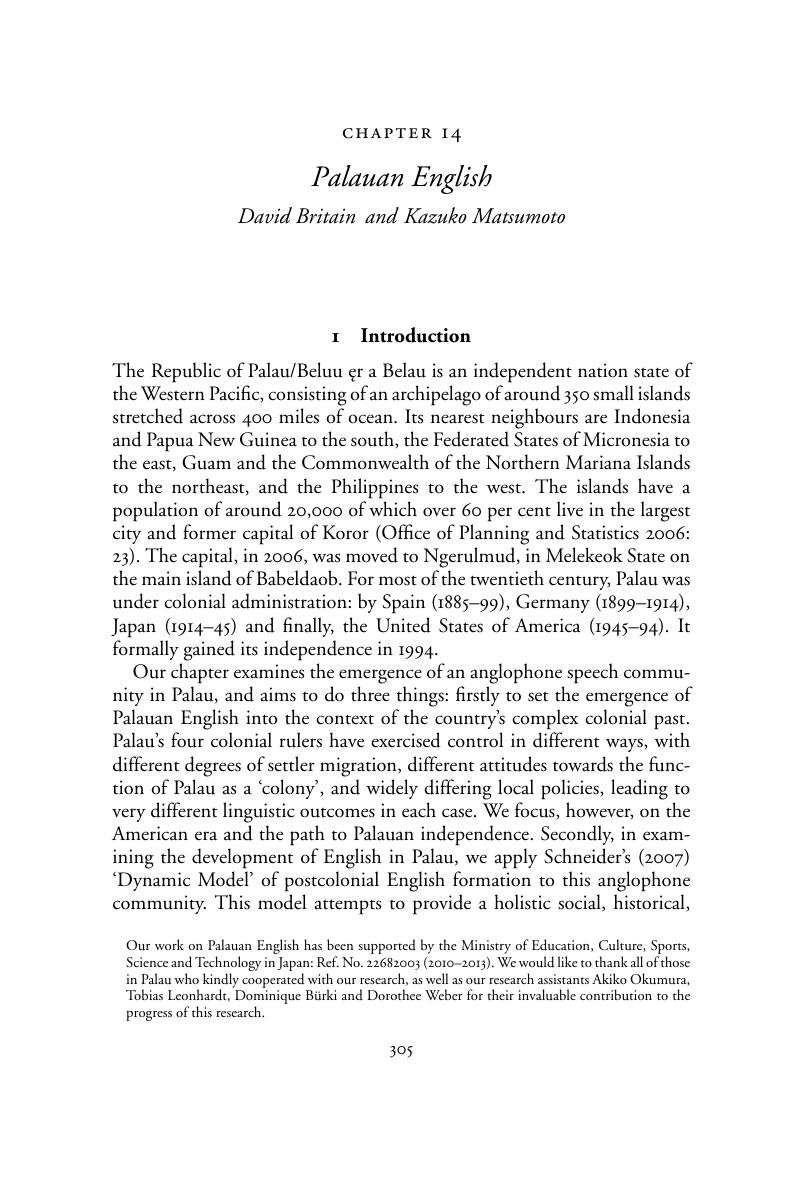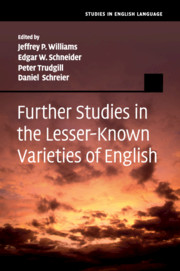Book contents
- Further Studies in the Lesser-Known Varieties of English
- Studies In English Language
- Further Studies in the Lesser-Known Varieties of English
- Copyright page
- Contents
- Maps
- Tables
- Contributors
- Chapter 1 Introduction
- Part I Europe
- Part II The Americas
- Part III Asia and the Pacific
- Chapter 12 Palmerston Island English
- Chapter 13 Pasifika Englishes in New Zealand
- Chapter 14 Palauan English
- Index
- References
Chapter 14 - Palauan English
from Part III - Asia and the Pacific
Published online by Cambridge University Press: 05 May 2015
- Further Studies in the Lesser-Known Varieties of English
- Studies In English Language
- Further Studies in the Lesser-Known Varieties of English
- Copyright page
- Contents
- Maps
- Tables
- Contributors
- Chapter 1 Introduction
- Part I Europe
- Part II The Americas
- Part III Asia and the Pacific
- Chapter 12 Palmerston Island English
- Chapter 13 Pasifika Englishes in New Zealand
- Chapter 14 Palauan English
- Index
- References
Summary

- Type
- Chapter
- Information
- Further Studies in the Lesser-Known Varieties of English , pp. 305 - 343Publisher: Cambridge University PressPrint publication year: 2015
References
References
Data sources
- 5
- Cited by



